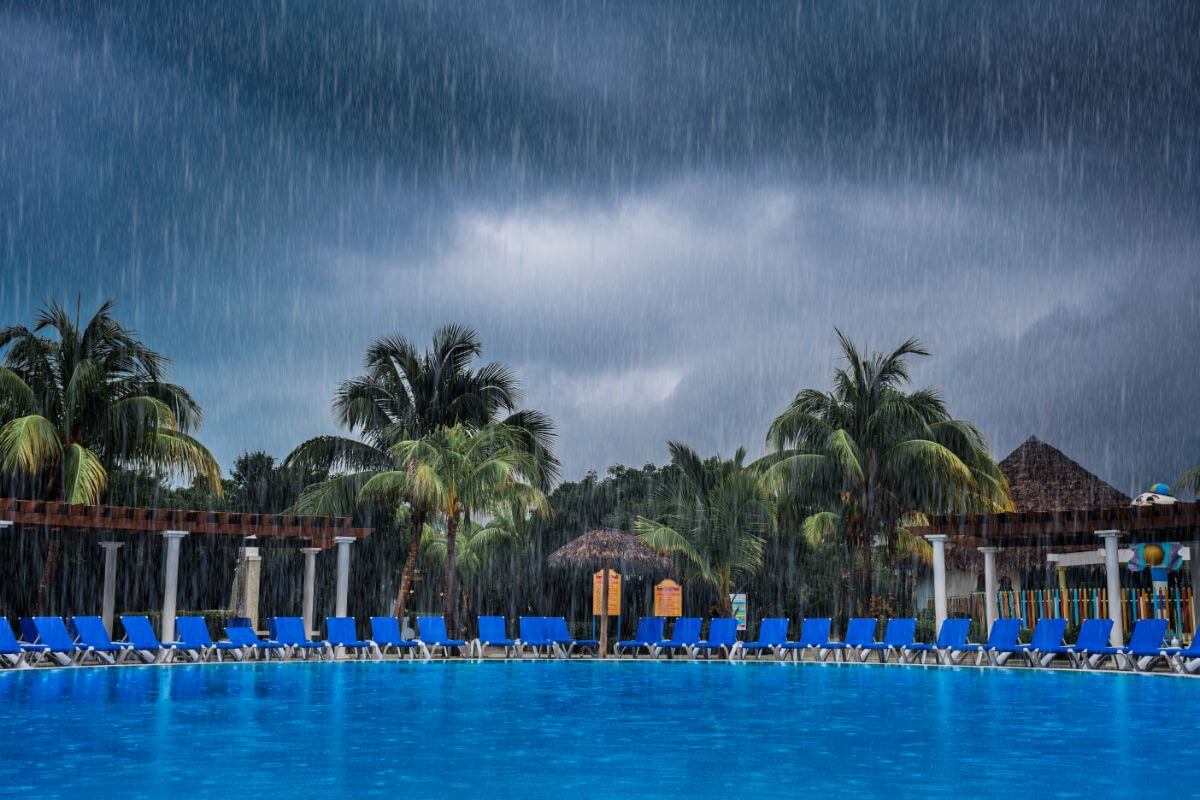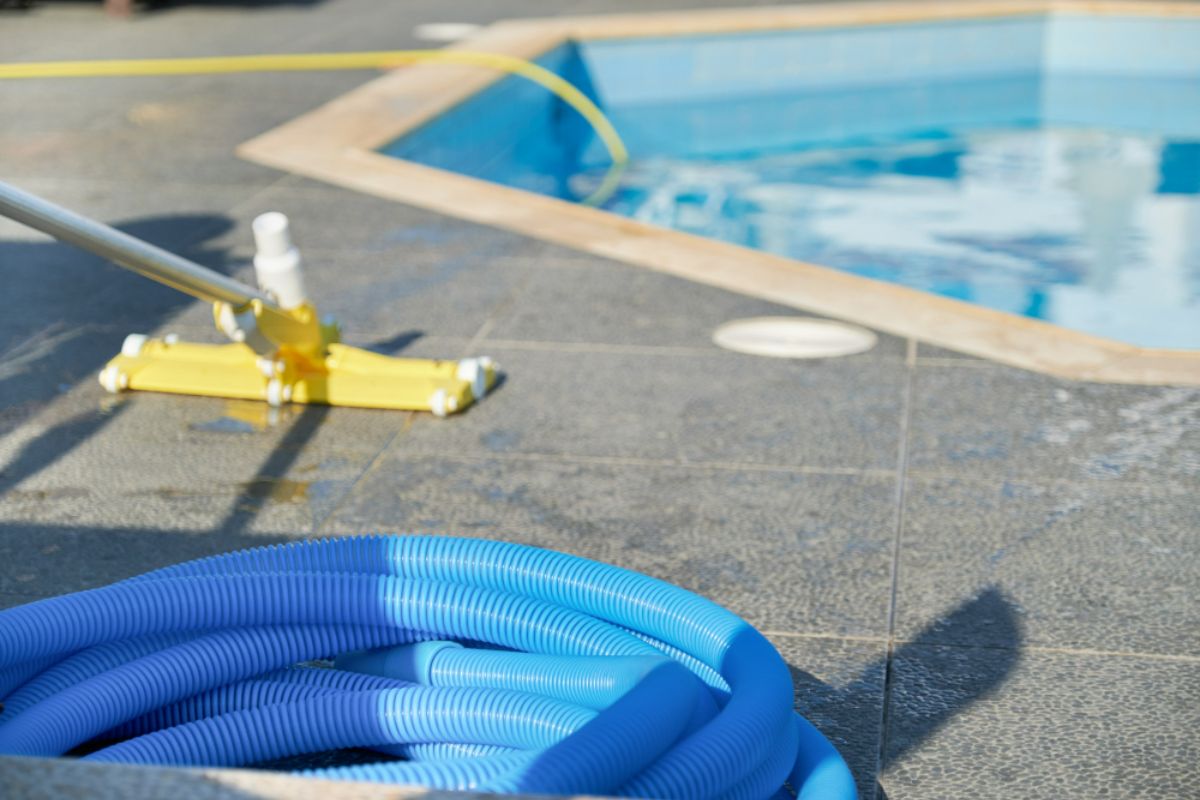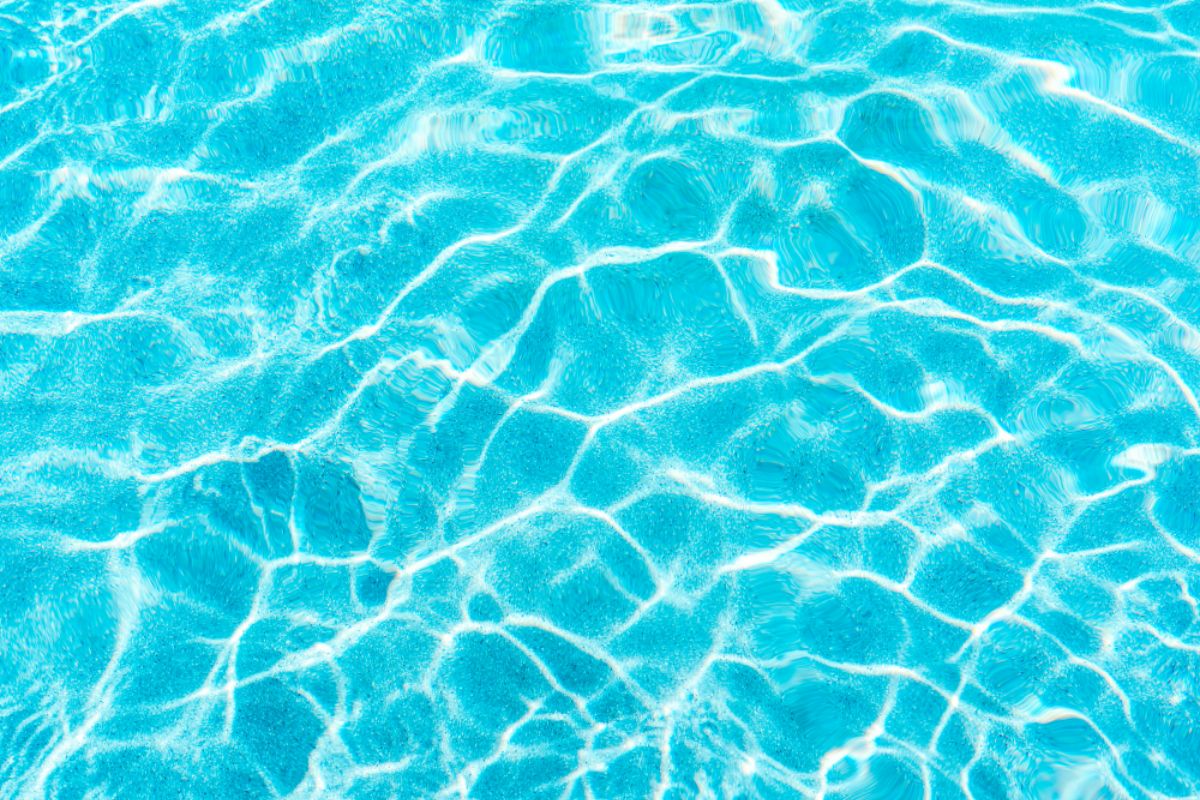How do you clean a pool after heavy rainfall?
- Lower your pool water level
- Balance your pool water
- Shock and filter your pool water
Have you ever thought about what you should do to your pool after heavy rainfall? If you’re a pool owner, it’s a fair question, as it can bring all kinds of junk into your pool. Debris, leaves, rainfall, and various other elements can disrupt the chemical balance of the pool, causing algae to form or even cloudy pool water. To avoid this water, it’s important to know how to clean a pool after heavy rainfall. Keep reading to learn more!
Lower Your Pool Water Level
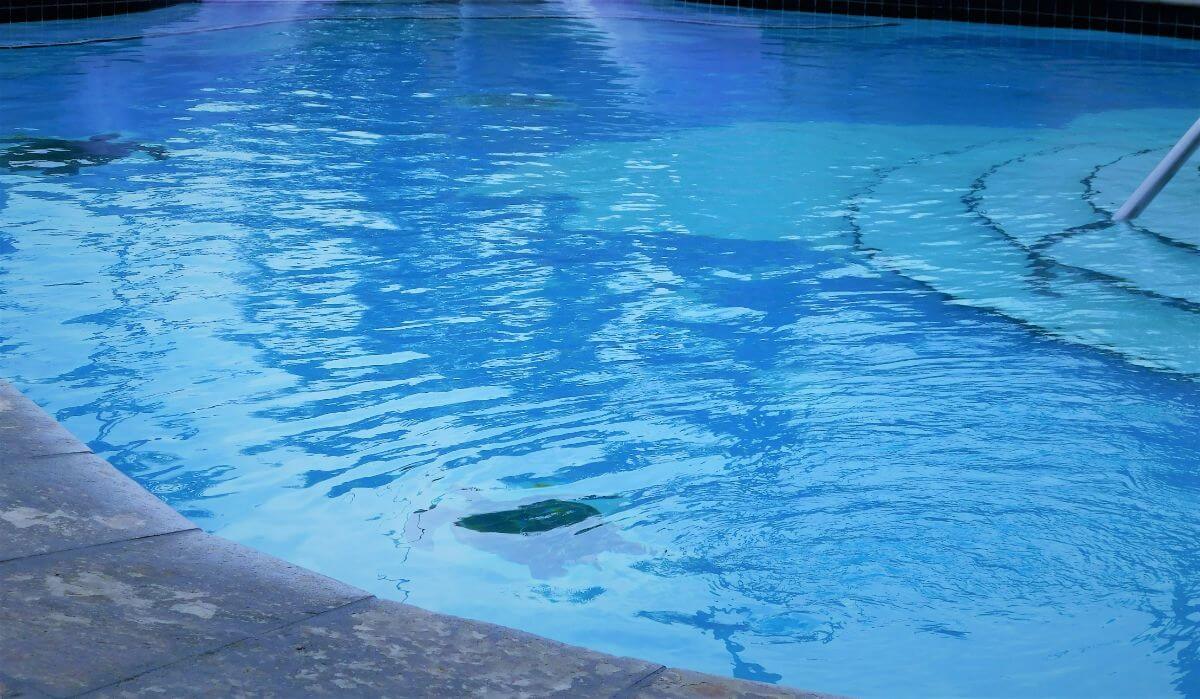
Before you start balancing the chemical levels of your pool after the rain, you need to first lower its water level. Here’s how you can do it:
- Turn off your pool pump. Change the filter multiport valve handle from “filter” to “waste”. Don’t change it to backwash.
- Open a valve on the waste line. Disconnect the suction cleaner and remove the vacuum plate from the skimmer box.
- Turn the pump back on to lower your pool water level. Observe until the water level is halfway down the skimmer box opening. After that, turn the pump off.
- Return the multiport valve handle to “filter”. Start reconnecting the vacuum plate and suction cleaner.
- Lastly, turn the pump back on. You can also set the time to automatically on it again.
Remember that you can’t lower the pool water level if there’s too much dirt in the water. When this is the case, you’ll need to vacuum it instead.
Balance Your Pool Water
After lowering the pool water level, it’s time to balance its chemical levels once again. This step ensures pool owners that the water remains clean and safe for swimming.
- First, get a pool testing kit like Oktakem’s HCT Pool & Spa 5-in-1 Test Strips to check the chemical levels, especially the alkalinity and pH levels. The ideal pH range is 7.4-7.6, and if it’s too low, use a pH increaser like sodium carbonate to bring it up to the right range.
- If the pH level is too high, use a pH decrease like muriatic acid or other alternatives like Oktakem’s HCT Dry Acid. The ideal range for alkalinity is between 80-120 parts per million (ppm), and if it’s low, use soda ash to raise it to the right range.
- After adjusting the pH and alkalinity levels, check and adjust other chemical levels as needed, such as chlorine and total hardness.
- Monitor the water regularly and make further adjustments as needed to maintain the right balance.
Remember to always follow the manufacturer’s instructions and wear protective gear when handling pool chemicals.
Shock And Filter Your Pool Water
After you’ve done the first two steps, the last thing you should do is shock and filter your pool water.
- Start by raising the chlorine levels to 10 times the normal amount. This will kill any bacteria, algae, or other contaminants that may have entered the pool during the rain. Give it at least six hours before using the pool again.
- To filter the water, run your pool filter for 24 hours or more to remove any debris, dead algae, and other contaminants. Make sure to clean or replace the filter if needed.
- After filtering, test the water again to make sure the chemical levels are back to normal and adjust as necessary.
Keep an eye on the water levels in the future and make any necessary adjustments to maintain the right balance.
Swimming Pool Tips To Remember
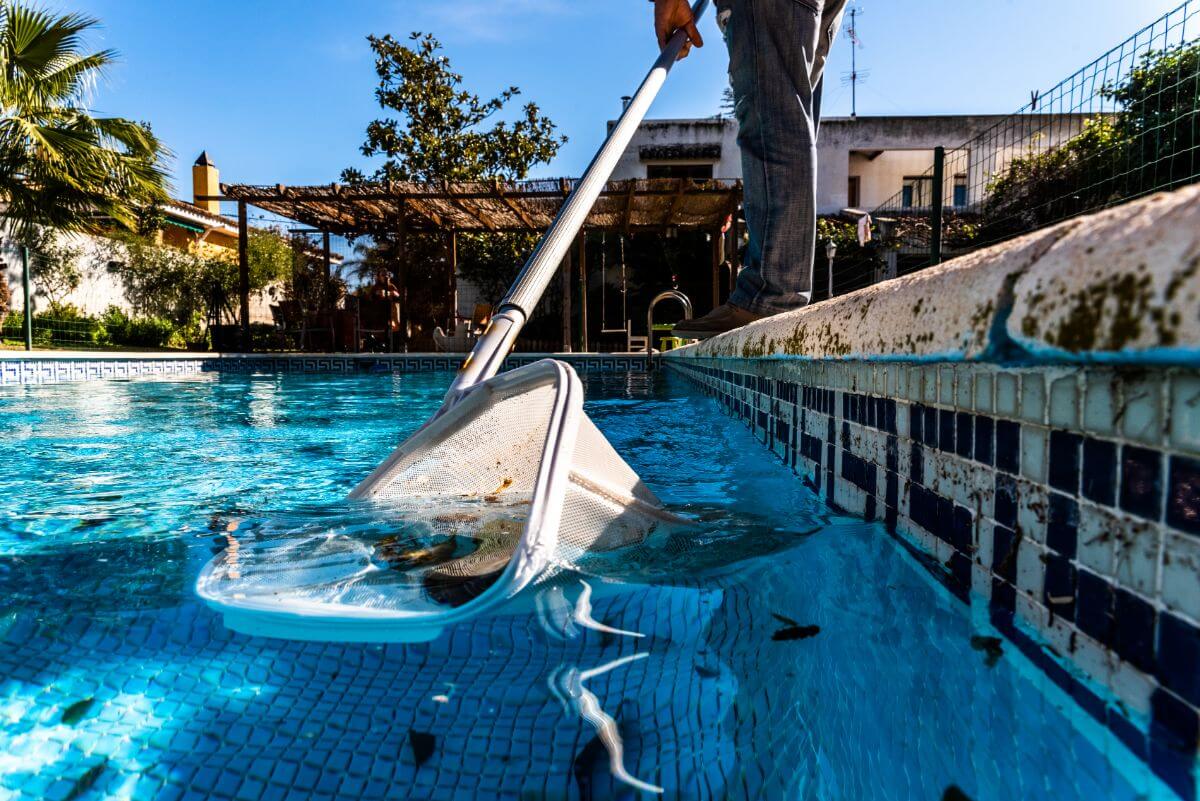
To ensure the cleanliness and safety of your pool, it’s also important to consider these things when heavy rainfall struck your pool.
Move Planters Away From the Pool
We can all agree that planters are an attractive decorative feature for your oasis, but they can damage pools during a storm. Phosphates, an essential nutrient for plant growth, are found in soil. If planters overflow due to rain, the runoff can deposit loose soil and phosphate into the pool, lowering alkalinity and creating a breeding ground for algae, exacerbating the cloudy water problem. Take them out of the pool area before the next storm.
Check All Necessary Pool Equipment After Heavy Rainfall
As you might expect, if heavy rainfall damages your pool, it can also damage your pool equipment, such as skimmers, vacuums, pumps, filters, and even the pool cover. These tools are essential for keeping your pool healthy and clean daily, not just after rainfall. So, kindly check all of your necessary equipment after a rain to see if it is damaged and replace any there is.
Key Takeaway
It can be difficult to imagine that something as simple as rain can heavily transform your pool water from clear to murky. However, you should not be disheartened. This blog just showed you how to clean a pool after heavy rainfall.
If you’re looking for high-quality, effective swimming pool chemicals in the Philippines, we at Oktakem can be your trusted partner! We stock a list of swimming pool chemicals for cleaning and maintenance, and other raw materials useful for your DIY recipes at home!
Get in touch with Oktakem today. You may also visit our Shopee page or Lazada page for more information about our products.







